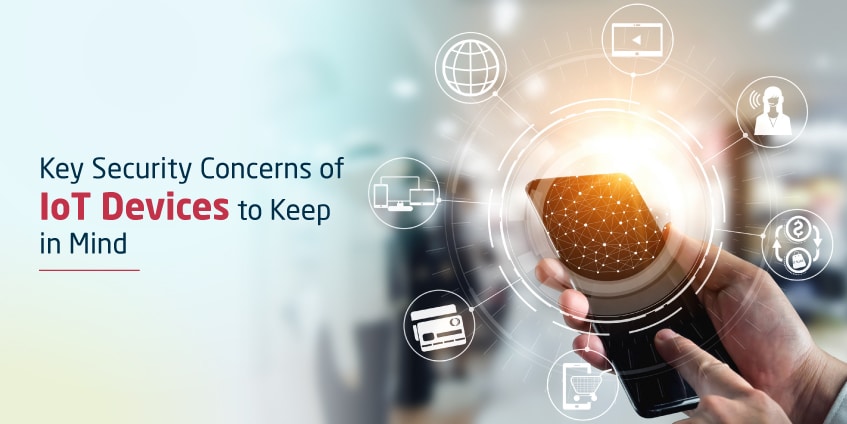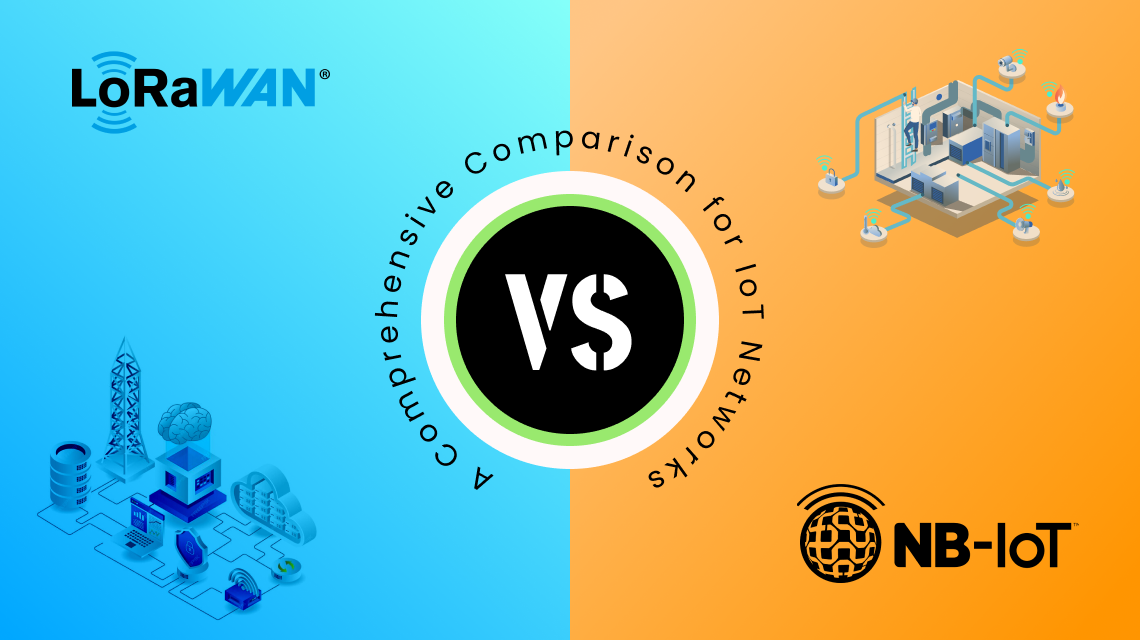
Table of Contents
IoT devices have made significant progress in the last couple of years. However, it also gained a lot of attention from hackers who keep on coming up with innovative ways to attack IoT-based apps, data and devices. In fact, in the coming days, there will be more security concerns for which we need to prepare.
The security of IoT devices is not something new and has been a cause for concern for some time. However, it can allow both small- and large-scale attacks. Most of these attacks originate from simple security problems, for instance, the retention of default passwords on a telnet service.
The main problem with enterprises is that they understand IoT challenges with emerging technologies but ignore the requirement of cybersecurity. This gives a chance to hackers for attacking who continuously look for vulnerabilities.
Here are the top issues that service providers, device manufacturers, app developers, and users should never ignore.
Major IoT Security Concerns
IoT devices play a crucial role in security. However, focusing only on this particular aspect does not give the big picture of security concerns. There are several factors that make IoT security critical in today’s times.
-
Threats and Risks of IoT
Security of IoT is critical majorly due to the expanded attack surface of threats that have always been troubling for networks. In addition, insecure practices of organizations and users who may not have the best knowledge may also hamper the protection of IoT ecosystems.
-
Misconfiguration and Mismanagement of Devices
Weak passwords, security errors, and overall device mismanagement increases security threats. At times, users also lack the knowledge to implement proper security measures. Wherein service providers and manufacturers require to help their customers to get better protection.
-
Unknown Exposure
Anything which involves the internet and connected devices increases the chances of online exposure. Therefore, crucial technical and personal information can be unknowingly stored and targeted in these devices. It increases the chance of user information theft.
-
Growing Cyberattacks
Devices that suffer from cyberattacks are used for distributed denial-of-service (DDoS). In fact, devices that are infected can be the attack base to hijack more machines and hide malicious activity, or as access to lateral movement in a corporate network. While organizations may seem like the more preferable targets, smart homes also experience unexpected cyberattacks.
-
Malware
Most IoT devices have limited computing capacity, however, that doesn’t stop the attack of malware. Cybercriminals leverage various kinds of malware to attack IoT networks. IoT botnet is the most common malware variant, as they are versatile and profitable for cybercriminals.
The most famous case was the attack of 2016 when Mirai took down major websites and services using an army of ordinary IoT devices. Other kinds of malware include cryptocurrency mining malware and ransomware.
-
Hardware Issues
Since mobility solutions and cloud computing have increased with IoT, most chip makers work on their processors to add extra security. The latest architecture of chips is specifically for IoT devices. This multifaceted design will require more battery power which is going to be a big challenge for IoT apps.
-
Software Apprehensiveness
Most people are not able to set passwords that are complex and lengthy enough to decode. Therefore, devices are logged in through simple passwords. It is a great opportunity for hackers to hack devices as passwords are easy to break in. As a result, users need to set strong passwords which can provide good security. Authentication issue is one of the crucial reasons behind security risks.
-
Web Interface
Cross-site scripting, weak session management, and simple passwords can be a huge concern for the user web interface. These practices are favorable for hackers to easily recognize user accounts and misuse them for their benefit. It makes IoT devices more vulnerable to cyber-attacks.
-
Data Encryption
There are many devices that use unencrypted network services. These devices failed to encrypt the data even if they are connected to the internet. In such cases, devices should perform transport encryption which involves encrypted information transformation between two devices. It will be a crucial step to eliminating security concerns.
Also Read : How IoT Benefits Enterprise Mobility and Modern Businesses
Emerging Issues
Lack of planning of industry has led to minimal strategies and defenses against threats in developing IoT ecosystems. Therefore, the industry needs to do research on IoT security for anticipating emerging issues accurately.
Let’s look at some of the emerging issues which need monitoring:
- Remote Work Management: Covid-19 has brought work-from-home (WFH) arrangements on a large scale for enterprises throughout the world. It has increased the higher dependence on home networks. In such situations, IoT devices have become useful WFH arrangements. This emergence of remote work calls attention to reexamining IoT security practices.
- Complex Environments: Interconnected devices may offer various benefits but give rise to complex environments. Such a vast network makes it difficult for people to control and look after the devices. If the configuration is overlooked in such cases, it results in terrible consequences and can affect the security of the physical household.

How to Improve IoT Security
There is no immediate solution to the security issues of IoT. Certain strategies and tools are required to properly secure specialized systems and aspects of the IoT. However, users and corporations as well can apply a few best practices to reduce risks and prevent threats regarding IoT:
- Work towards security from the day you adopted the IoT system.
- Always check the in-built security features.
- Research threats and attacks constantly to prevent security issues.
- Use built-in security features.
- Get security updates to keep track of the status of your devices.
- Be aware of security breaches.
Wrapping Up
The top security problems are mostly related to access control and exposed services. Moreover, users should execute security measures such as encryption. IoT software development services can facilitate the secure use of their products by offering documentation and giving clear-cut guidelines to users and security professionals.
Once devices are physically secured, it will be harder for attackers to threaten security. Finally, if the device has proper security, it will reject programs provided by the attacker, and notify users that something is wrong.
Solution Analysts is a leading IoT application development company that assists various companies to leverage the benefits of the Internet of Things. We offer our services to a wide variety of industries to make them efficient and productive with the available data.











 sales@solutionanalysts.com
sales@solutionanalysts.com solution.analysts
solution.analysts






